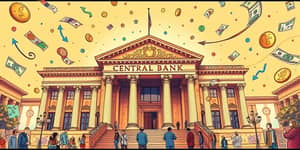
Government budgets carry more weight than mere balances of debits and credits; they chart the course of entire nations and define citizens’ welfare. In times of uncertainty, understanding how public spending ripples through the marketplace empowers us to advocate for sustainable economic growth and safeguard societal stability. This article explores the mechanics, data, and real-world examples that shape fiscal policy, equipping readers with clarity and practical insights.
Fiscal policy encompasses the government’s strategic choices around taxation and expenditure. By tweaking these levers, leaders aim to steer economic activity toward desired outcomes, such as full employment or controlled inflation.
Gross Domestic Product (GDP) is the benchmark for economic size and performance, calculated as:
GDP = C + I + G + NX, where:
Fiscal actions directly adjust government spending (G) and indirectly influence consumption and investment through tax policies and transfer programs.
Policymakers generally pursue two broad strategies:
While expansion can jumpstart growth during recessions, contraction may be necessary to anchor long-term price stability.
When governments inject capital into schools, infrastructure, or social welfare, they generate new income that cycles through the economy—this is the multiplier effect. Each dollar spent can yield more than a dollar in total economic activity.
Conversely, excessive public borrowing may elevate interest rates, making credit costlier for businesses. Known as the crowding out effect, this phenomenon can stifle private investment if government deficits run persistently high.
In fiscal year 2024, U.S. federal expenditure reached $6.75 trillion, about 23% of GDP. Despite this scale, Q1 2025 saw a 0.5 percentage point drag on GDP growth, mainly due to declining defense outlays and workforce reductions.
Legislative proposals for 2025 include $5.3 trillion in deficit-financed tax cuts, $521 billion in new defense and immigration spending, and $4 billion in spending cuts. Meanwhile, extending the Tax Cuts and Jobs Act could shrink federal revenues by $4.5 trillion over a decade, versus tariff hikes projected to collect $2.1 trillion but potentially trim output by 0.8% in the long run.
Fiscal shifts rarely affect all industries equally. Durable goods production is expected to slow by 0.7% in 2025, while nondurables may grow by 1.4%. These disparities underscore the importance of tailoring spending to sectors where it can maximize employment and innovation.
Across high-income nations, government spending as a share of GDP correlates strongly with national income levels. Since 1980, many advanced economies have modestly reduced spending growth, reflecting efforts to balance welfare objectives with fiscal sustainability.
Taxes and transfers wield immense power over income distribution. OECD data reveal that redistributive fiscal measures cut inequality—measured by the Gini coefficient—by roughly 25% on average. Thoughtful design of transfers and tax credits can lift marginalized communities while maintaining incentives for work and enterprise.
Policymakers face a delicate balancing act between immediate stimulus and long-term debt health. Overemphasis on short-term gains can saddle future generations with unsustainable obligations, while overly austere budgets risk entrenching unemployment and hardship.
Striking the right equilibrium demands rigorous analysis, transparent decision-making, and open debate.
Fiscal choices resonate through bond markets and influence central bank decisions. In 2024, restrained deficit growth and extended tax provisions helped calm Treasury yields, lowering the 10-year rate to 4.25% by year-end. Such synergy between fiscal prudence and monetary accommodation can foster stable, predictable financial conditions.
This snapshot highlights the scale of public outlays and their immediate macroeconomic repercussions.
Citizens and policymakers alike can engage constructively with fiscal debates by:
By staying informed and participatory, we ensure that public finances serve the common good without compromising our future.
Effective fiscal policy transcends its technical veneer to become a tool of societal transformation. When governments allocate resources wisely—balancing growth, equity, and sustainability—they unlock the full potential of economies and communities.
As global challenges multiply, from aging populations to climate change, the imperative to craft responsible budgetary frameworks grows ever stronger. By grounding decisions in data, embracing transparency, and valuing inclusive growth, we can wield government spending as a force for lasting prosperity.
References













